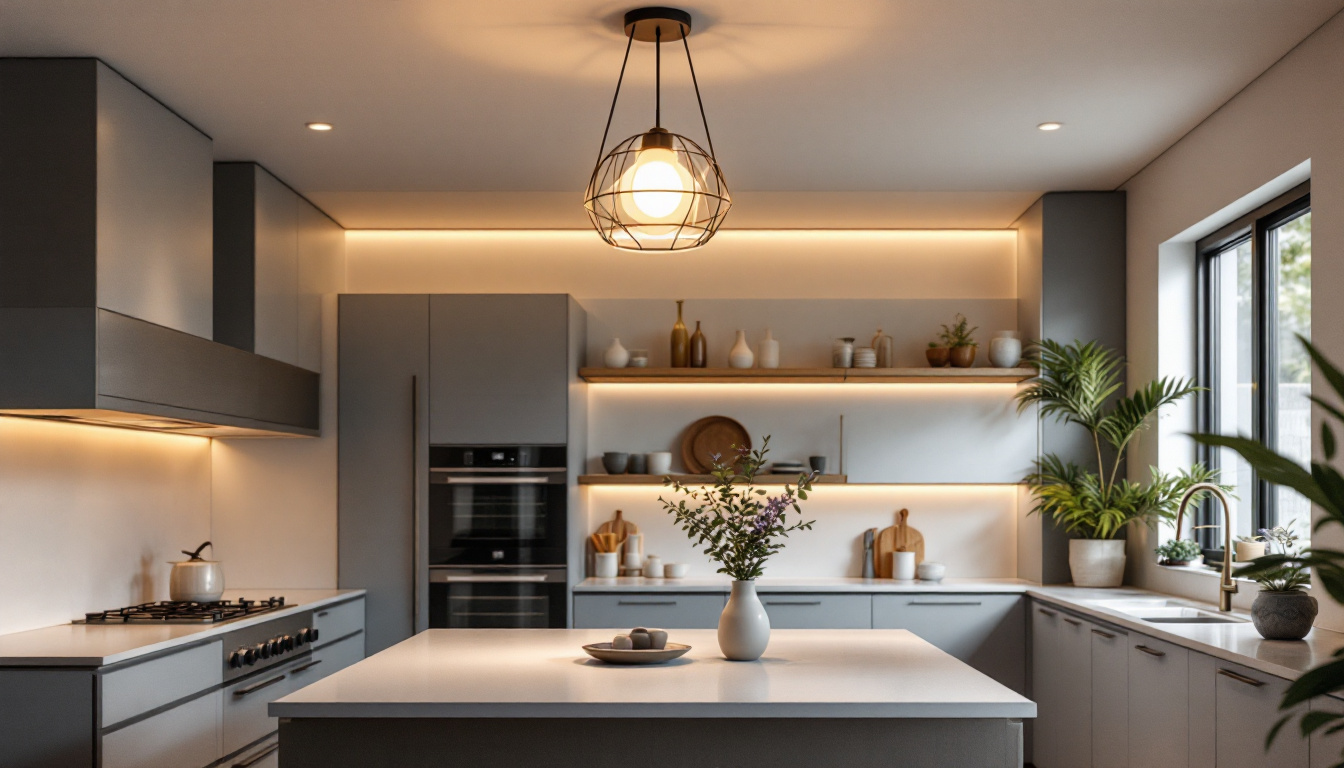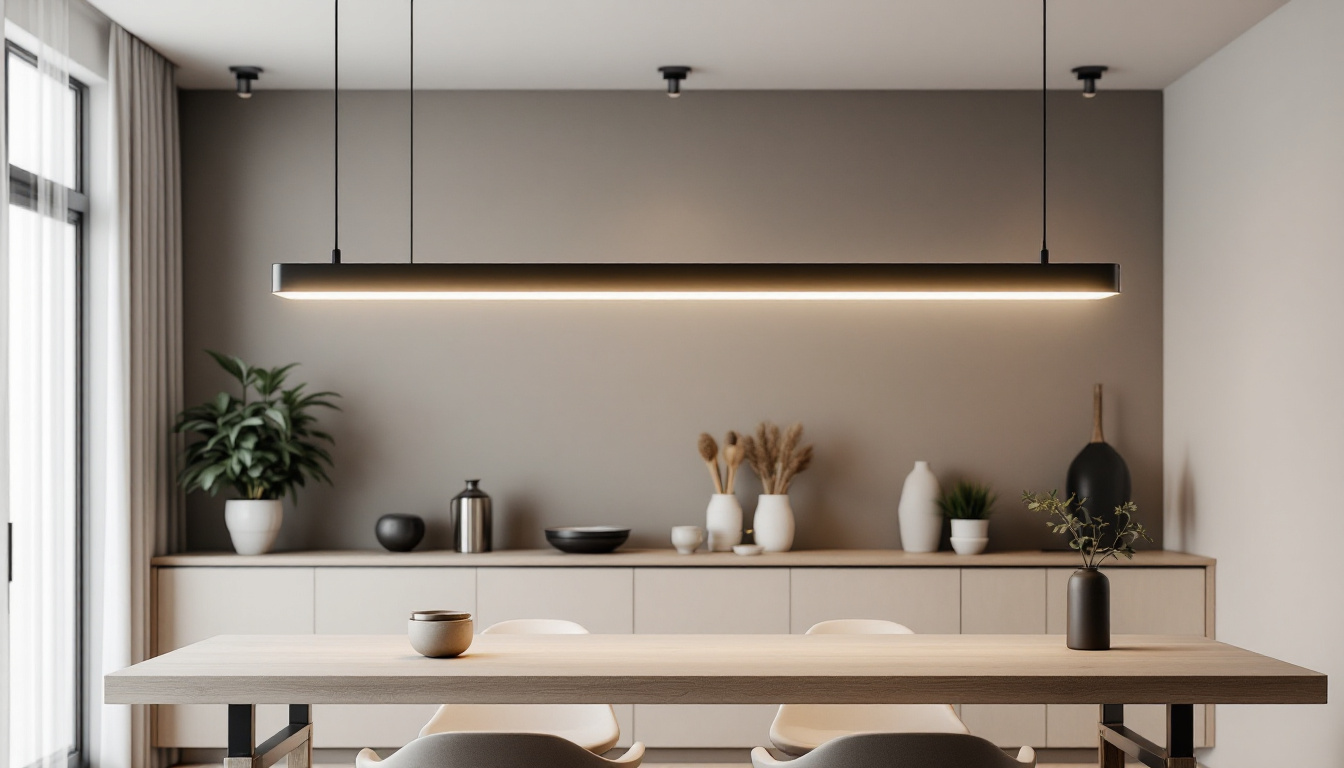
When it comes to kitchen lighting, the ceiling light plays a pivotal role in both functionality and aesthetics. As a lighting contractor, understanding the nuances of ceiling lighting in kitchens can significantly enhance your service offerings. This guide delves into various aspects of ceiling lights tailored for kitchens, providing insights into types, installation tips, and design considerations.
The kitchen is often referred to as the heart of the home, and rightly so. It’s a space where families gather, meals are prepared, and memories are created. Therefore, the lighting in this area must not only illuminate but also enhance the overall ambiance. Proper kitchen lighting can transform the space, making it more inviting and functional, while also reflecting the personality of the homeowner. It plays a crucial role in setting the mood for everything from casual breakfasts to festive dinner parties.
In any kitchen, lighting serves two primary purposes: functionality and aesthetics. Functional lighting is essential for tasks such as chopping vegetables, reading recipes, or cleaning. Aesthetic lighting, on the other hand, contributes to the overall mood and design of the space. A well-planned ceiling light can achieve both, making it a vital component of kitchen design. The balance between these two types of lighting can significantly affect the kitchen’s usability and appeal, ensuring that it is not only practical but also a beautiful space to enjoy.
There are several types of ceiling lights suitable for kitchens, each offering unique benefits. Understanding these options allows contractors to recommend the best solutions for their clients. Choosing the right lighting can enhance the functionality of the kitchen while also complementing its design theme, whether it be modern, rustic, or traditional.
In addition to these options, layering different types of lighting can create an inviting and functional kitchen environment. For instance, combining ambient lighting with accent lights can highlight architectural features or decorative elements, such as a beautiful backsplash or artwork. Moreover, the use of under-cabinet lighting can enhance visibility on countertops, making food preparation safer and more efficient. As homeowners increasingly prioritize both style and functionality, the right kitchen lighting becomes an essential aspect of modern home design.
Installing ceiling lights in a kitchen requires careful planning and consideration. Here are some essential factors to keep in mind during the installation process.
The height at which ceiling lights are installed can significantly affect their effectiveness. For flush mount lights, the installation should be high enough to avoid obstructing views but low enough to provide adequate illumination. Pendant lights should hang at a height that allows for comfortable movement beneath them, typically around 30-36 inches above countertops or tables. Additionally, consider the layout of the kitchen; lights should be positioned to minimize shadows on work surfaces and ensure even distribution of light throughout the space. In open-concept kitchens, the placement of ceiling lights can also help define different areas, guiding the eye and creating a cohesive look.
Choosing the right wattage is crucial for achieving the desired brightness. Kitchens typically require bright lighting, especially in work areas. A general rule of thumb is to aim for about 100-150 lumens per square foot. Therefore, understanding the wattage and lumens output of different bulb types is essential for effective lighting design. For instance, LED bulbs are an excellent choice as they provide high lumens with lower wattage, making them energy-efficient and cost-effective in the long run. Moreover, consider the color temperature of the bulbs; warmer tones can create a cozy atmosphere, while cooler tones are more energizing and can enhance the appearance of food and ingredients in the kitchen.
Layering different types of lighting can create a more dynamic and functional kitchen environment. Combining ambient, task, and accent lighting allows for flexibility in illumination. Ceiling lights can serve as ambient lighting, while under-cabinet lights can provide task lighting for countertops. This layered approach not only enhances functionality but also adds depth and interest to the kitchen space. Incorporating dimmable fixtures can further enhance this effect, allowing you to adjust the lighting based on the time of day or the mood you wish to create. Additionally, consider using decorative fixtures as focal points; a striking chandelier or unique pendant can serve as both a light source and a piece of art, elevating the overall design of the kitchen.
In today’s environmentally conscious world, energy efficiency is a critical consideration in lighting design. Many homeowners are looking for sustainable options that reduce energy consumption while still providing effective illumination. This shift towards sustainability not only helps in lowering utility bills but also contributes to a reduced carbon footprint, making it an essential aspect of modern home design.
LED lights are among the most energy-efficient options available. They consume significantly less energy than traditional incandescent bulbs and have a longer lifespan, making them a cost-effective choice in the long run. Additionally, LED lights are available in various color temperatures, allowing homeowners to select the perfect ambiance for their kitchen. Beyond aesthetics, many LED products now come with energy ratings that help consumers make informed choices, ensuring that their lighting solutions align with their sustainability goals.
Moreover, the versatility of LED lighting extends to their design options. From sleek recessed lighting to decorative pendant fixtures, LEDs can seamlessly integrate into any kitchen style. Their low heat emission also means that they can be used in spaces where traditional bulbs might pose a risk, such as near food preparation areas. As technology advances, features like dimmability and smart connectivity are becoming standard, making LED lighting not just an eco-friendly option but also a highly functional one.
Incorporating smart lighting technologies into kitchen designs is becoming increasingly popular. Smart ceiling lights can be controlled via smartphone apps or voice commands, offering convenience and flexibility. These systems often allow users to adjust brightness and color temperature, further enhancing the kitchen’s functionality and ambiance. Beyond mere control, smart lighting can also be programmed to follow daily routines, automatically adjusting throughout the day to match the natural light outside, which can help in maintaining a comfortable environment.
Additionally, many smart lighting systems are compatible with home automation platforms, allowing for integration with other smart devices. For instance, when cooking, a homeowner can set the lights to a bright white to enhance visibility, and then switch to a warmer tone for a cozy dinner setting with a simple voice command. This level of customization not only enhances the user experience but also promotes energy savings by ensuring that lights are only on when needed and at the appropriate intensity. As the technology continues to evolve, we can expect even more innovative features that will further revolutionize how we think about lighting in our homes.
Staying updated on design trends can help lighting contractors provide valuable insights to clients. Here are some current trends in kitchen ceiling lighting that are worth noting.
Minimalism continues to dominate kitchen design, and ceiling lights are no exception. Simple, clean lines and understated designs are favored, allowing the lighting to blend seamlessly with the overall decor. Flush mount and recessed lighting options are particularly popular in minimalist kitchens.
On the other end of the spectrum, statement fixtures are gaining traction. Bold, eye-catching designs can serve as focal points in the kitchen, adding personality and style. Pendant lights with unique shapes or materials can elevate the overall aesthetic, making them a popular choice for modern kitchens.
Combining different materials in ceiling light fixtures can create visual interest. For instance, pairing metal with glass or wood can add texture and depth to the design. This trend allows for a more personalized approach, enabling homeowners to express their style through lighting choices.
Lighting contractors often encounter challenges during the installation process. Being prepared with solutions can enhance the overall service provided to clients.
In kitchens with low ceilings, finding suitable lighting can be challenging. Flush mount lights are an excellent solution, as they provide ample illumination without taking up valuable vertical space. Additionally, using recessed lighting can help maximize space while ensuring effective lighting.
Older homes may present wiring challenges that can complicate the installation of new ceiling lights. In such cases, it may be necessary to update the electrical system to accommodate modern lighting solutions. Contractors should be prepared to assess the existing wiring and make necessary upgrades to ensure safety and compliance with local codes.
Achieving the right balance of light and shadow is crucial for creating an inviting kitchen atmosphere. Overly bright lighting can create harsh shadows, while insufficient lighting can lead to dark areas. Utilizing a combination of ambient, task, and accent lighting can help achieve a harmonious balance, ensuring that every corner of the kitchen is well-lit.
Ceiling lighting in kitchens is more than just a functional necessity; it is an essential element of design that can transform the space. By understanding the various types of ceiling lights, installation considerations, energy-efficient options, and current design trends, lighting contractors can provide exceptional service to their clients.
As the demand for innovative and stylish kitchen lighting continues to grow, staying informed and adaptable will be key to thriving in this industry. By embracing new technologies and design trends, contractors can not only meet but exceed client expectations, ultimately enhancing the heart of the home.
Ready to elevate your kitchen lighting projects with the finest selection of ceiling lights? At LumenWholesale, we offer contractors the advantage of spec-grade lighting products at exceptional wholesale prices. Our commitment to quality and affordability ensures that you can light up every kitchen with confidence and creativity. With our hassle-free bulk buying and free shipping, you’ll have access to premium lighting solutions that meet the highest industry standards. Don’t let inflated markups dim your project’s potential. Visit LumenWholesale for Wholesale Lighting at the Best Value and brighten up your service offerings today.

Discover how Leviton Manufacturing Co. empowers lighting contractors with innovative solutions and reliable products.

Discover the essentials of linear suspension lighting in just five minutes with this concise guide tailored for lighting contractors.

Discover how LED office light fixtures are transforming the lighting industry with energy savings up to 50%, improved productivity, and eco-friendly benefits.

Discover how opting for cheap light bulbs can revolutionize your lighting contracting business by saving time and cutting costs.